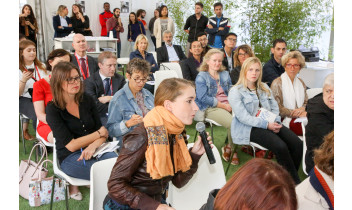
Newsletter No 6 - 2018
Working with the media
Hardly a day goes by without a story in the news on a health, medical, or science-related topic. But have you ever asked yourself how these stories get there?
Today’s fast-moving news climate, combined with shrinking news desk budgets, means that there are fewer journalists employed to report on an ever-growing range of topics. Many journalists will be general news reporters, rather than ones with specialist knowledge of an area such as health. This is particularly the case at local and regional level. They usually do not have the time or expertise to dig up their own stories.
Most of the stories in the news will have been prompted by a press release issued by media relations experts like me working for organisations such as the European Respiratory Society (ERS) or universities and other research institutions. Often there will be very little change between the originating press release and the story that appears in the media.
This is an opportunity but also a responsibility. An opportunity for you to tell your story – and stories from patients are a powerful tool in attracting the attention of journalists – but the onus is on the writer of the press release to represent research in an accurate and responsible manner.
Public trust in medical research is low, so we need to ensure that press releases do not over-hype research and make irresponsible claims. If you can build a reputation with journalists for sending them accurate, interesting and topical information, then you improve the likelihood that they will continue to use you as a source for stories in the future.
In the UK, the Academy of Medical Sciences has launched a labelling system for press releases to help support accurate reporting of research, and ERS has adopted this for its press releases.
By Emma Mason
Register/Login to take the free EPAP module on 'Working with the media'
Newsletter Issue 6 includes the following articles:
- Nadiya's role in the Butterfly in Blue fashion show
- One in a million (Barbara Crossley)
- Connecting with the media is our number one priority (Sabina Hodzic)
- Working with the media to get your message across (Lauren Anderson)
- My experiences of co-tutoring (Matt Cullen)